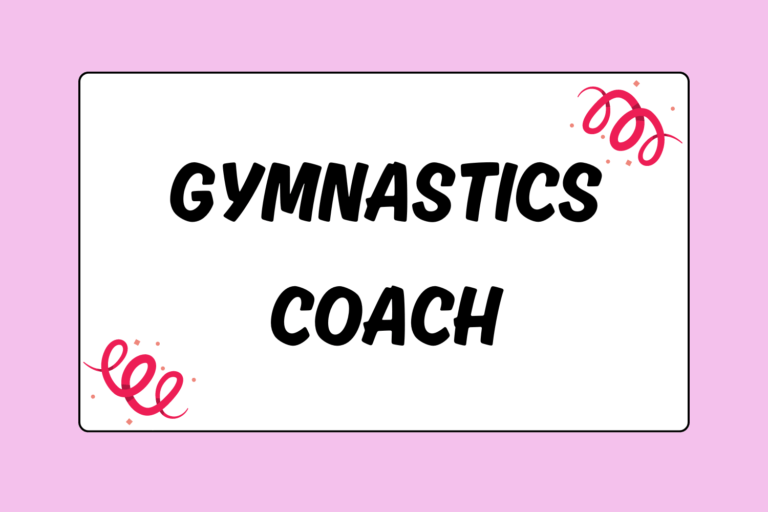Imagine balancing on a beam that’s just four inches wide and four to five feet off the floor. Now picture yourself flipping, leaping, and dancing across this same tiny beam. Amazingly, gymnasts conquer this event – possibly the most difficult one in gymnastics – every day. Before the tricks begin, though, a gymnast must first mount the beam. This guide takes you through an assortment of beam mounts that will have you up and balancing in no time.
Front Support Mount
The front support mount is typically the first mount a gymnast will learn. As you first practice the technique, it’s important to keep proper body position and your eyes focused upward. This position is similar to a front support on bars.
Front Support Mount Explained
Here’s how to perform a front support mount:
- Stand facing the beam, keeping your legs together and eyes focused forward.
- Place your hands on the beam with your palms on top of the beam and your fingers gripping the sides of the beam opposite of where you’re standing.
- Push your body up onto the beam, balancing on your arms while keeping your legs together and toes pointed.
- Slightly lean forward in order to keep your balance and push your body up higher. While doing so, bring a straight leg over the beam, resting in a straddle position.
- Bend your legs as your feet are placed flat on the beam behind your buttocks.
- Use your hands and feet to push into a standing position.
A Body Slide helps you gain the arm strength needed for a more aggressive front support mount:
- Hold your body in a front support position, either on a balance beam or bar.
- While squeezing your body tightly, push up and hollow out your chest.
- Continue pushing your body up until your knees are at beam- or bar-level.
- Lower your body to a front support position and repeat.
Mental Edge
It’s important to keep your eyes focused upward in all balance beam skills. Many gymnasts keep their eyes locked on the end of the balance beam, but their chins stay parallel to the beam. With the motto “look before you leap” in mind, remember that, in most cases, where you look is where you’ll end up. Therefore, keep your eyes focused on the end of the beam and not on the floor – otherwise, that’s where you’ll likely end up.
Leg Swing Mount with Half Turn
The front support mount is used in most beginning-level beam routines. Soon thereafter, most gymnasts move on to learn the leg swing with half turn mount. Before you try to master this mount, though, you’ll need strength, skill, and confidence.
Leg Swing Mount with Half Turn Explained
Here’s how to perform a leg swing mount with half turn:
- Stand with you arms out to your sides so that they’re parallel to the balance beam.
- Keeping your eyes focused on end of the beam, take one to three steps and then swing your lead leg forward to 45 degrees.
- Swing your good leg or outside leg up and over the beam while turning 180 degrees and landing in a straddle position on the beam.
- Your mount must be performed with fluidity, while keeping good posture and your arms and legs straight.
To improve your leg swing mount with half turn, try this leg-strengthening drill:
- Sit on the mat in a straddle position, keeping good posture with your hands placed on the mat in between your legs and close to your body.
- Lift and lower your legs simultaneously while maintaining a strong posture and straight legs.
If you want to make this drill easier, place your hands to either side of one leg and keep your hands close to your body. Then, lift your leg and, once you’re tired, switch sides. Keep practicing leg swings on the floor until your confidence level and strength improves.
Free Leg Leap to One Foot Mount
The free leg leap to one foot mount is the first in an array of different mounts that uses a spring board. It’s important to learn the correct punch off the board and proper body technique at this early stage to ensure future success with more difficult mounts.
Free Leg Leap to One Foot Mount Explained
Follow these steps to perform the free leg leap to one foot mount:
- Stand approximately three to four large steps behind the spring board.
- Approach the spring board and use an under-swing as you punch off the spring board with your legs together.
- Keep your body straight and your posture strong as you rise to beam level.
- Land on one foot, kicking your back leg out behind you.
- Lock your eyes on the end of the balance beam to help maintain your balance.
The following drill will help you perfect the entry into the free leg leap to one foot mount:
- Stack a couple of panel mats on top of each other with a spring board in front of them.
- Draw a chalk line on the top mat and practice this mount trying to land with one foot on the chalk line.
Once you master the lower level you can add higher mats and even blocks until you’re comfortable with landing on the beam. However, make sure you place panel mats on either side of the beam to protect you from injury, just in case you fall.
Straddle L to Endo Press Mount
Learning a straddle L to endo press requires a tremendous amount of strength and balance. Once mastered, though, this mount is as exciting to watch as it is to perform due to the amazing amount of body control it requires to pull it off.
Straddle L to Endo Press Explained
Here’s how to perform the straddle L to endo press mount:
- Stand at the side of the balance beam with your hands on top of the beam. Jump up and press to an L straddle hold.
- Keep your chin up and eyes forward as you hold your body in the straddle position with straight arms.
- Keeping your legs in a straddle, push your hips up towards the handstand position, leaning slightly forward to stay balanced.
- Once your body is in a balanced straddle handstand, bring your legs straight up and together.
- When you lower your body back to the straddle L, return exactly the same way you entered. Slowly lower your legs and then your body to the beam.
To improve your straddle L to endo press mount, try this upper-body strengthening drill:
- Place both hands on the floor close enough to a wall so that you’re able to rest your back against the wall.
- Place your hands on the floor and press your legs out and up into a straddle press handstand.
- Slowly lower your body to the starting position and repeat as many times as possible.
- Rest and attempt to beat your first number.
Conquering the Balance Beam
There are many different balance beam mounts, and they all vary in terms of difficultly and strength requirements. You’ll need to train long and hard if you want to master the beam mounts outlined in this guide. More importantly, you need to face all beam routines with courage and power. Once you’re free of any fear, you’ll be sticking these mounts in no time.





